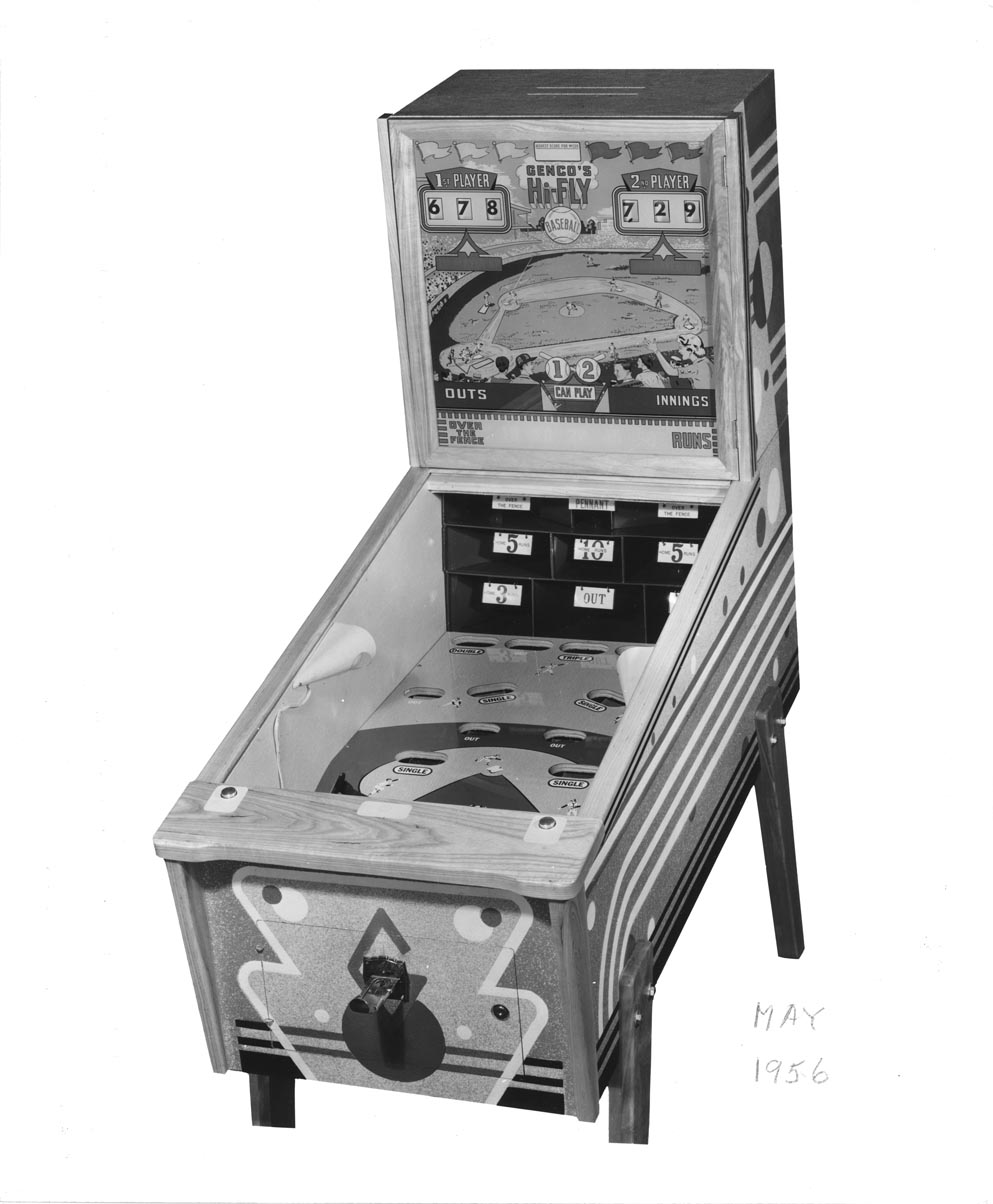
|
Description: Hi-Fly Baseball, Genco, 4/56, two players. Genco offered new features on Hi-Fly over its earlier Champion Baseball, such as a more compact pin game sized cabinet (now 60"x24"x69" instead of the early Champion 80"x25"x78" cabinet), more colorful and durable Formica playing field, and holdover pennant replay features. Unfortunately the one feature they removed from Hi-Fly was the manikin baseball players on the playfield (Champion Baseball had them). Also the smaller Hi Fly "ball park" (playfield) was not a fun as the larger playfield in Champion Baseball. But on the other hand, Hi Fly baseball overall was a smaller and more conventional sized game (Champion Baseball was huge!) Genco HiFly uses fifteen 1.5" plastic balls (same ball as used in Genco's 2 Player Basketball). These balls average 16 grams each in weight (14 to 18 grams, or .5 to .6 ounces per ball). The weight is important, as balls too light will stick on the playfield activation switches (this is more of a problem with Hi-Fly than say Two Player Basketball, which uses the same balls). The game will work with a minimum of nine balls, but really 12 to 15 balls is much better (Genco recommends 15 balls). Genco Hi-Fly uses #1458 bulb (18 volt solenoid power) light bulbs in the backbox, in addition to the standard #44/47 (6.3 volt) bulbs. These bulbs are at these positions: Player One Up, Player Two Up, Home plate, 50 runs (over the fence). If standard #44/47 bulbs are installed, they will burn very bright and die very quickly. The cabinet is very deep to allow balls to fly through the air (hence the plastic balls), three decks at back of playfield for scoring. Unlike most other pitch and bat games, Hi-Fly allows the player to hit grounders or real fly balls into the outfield or over the fence, without the use of ramps. Like real baseball, the player swings a miniature wooden baseball bat at plastic balls delivered in free air. Grounders are hit to the infield for a single, double, triple or an out. Hit a line drive into one of nine grandstand pigeonholes for scores from 3 to 100 runs. Keeps track of base hits with light animated runners on the backglass. Scans of the scorecards can be downloaded here. Note also the 1957 Genco release called Quarterback that used the same "ball through the air" concept. If you have a 1956 Genco Hi Fly Baseball for sale please contact me at cfh@provide.net
|
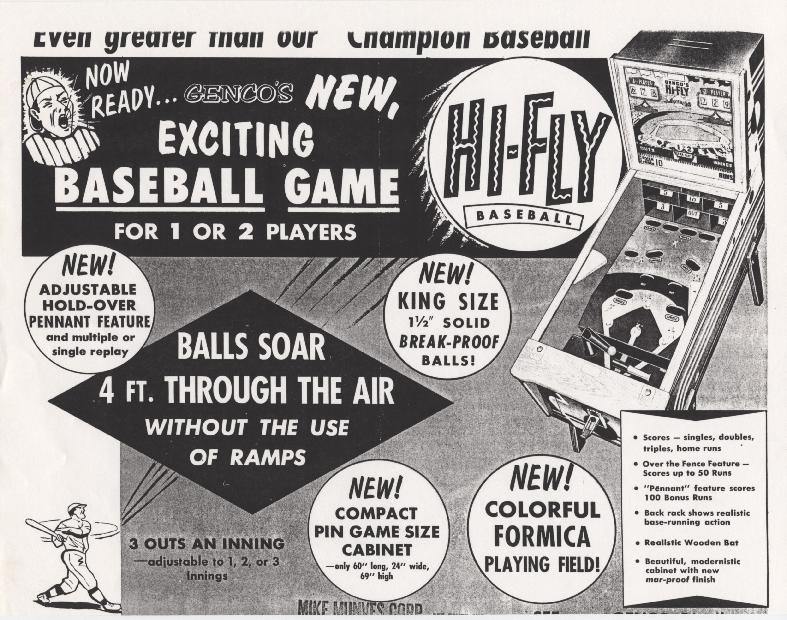

The author's Genco Hi Fly baseball.
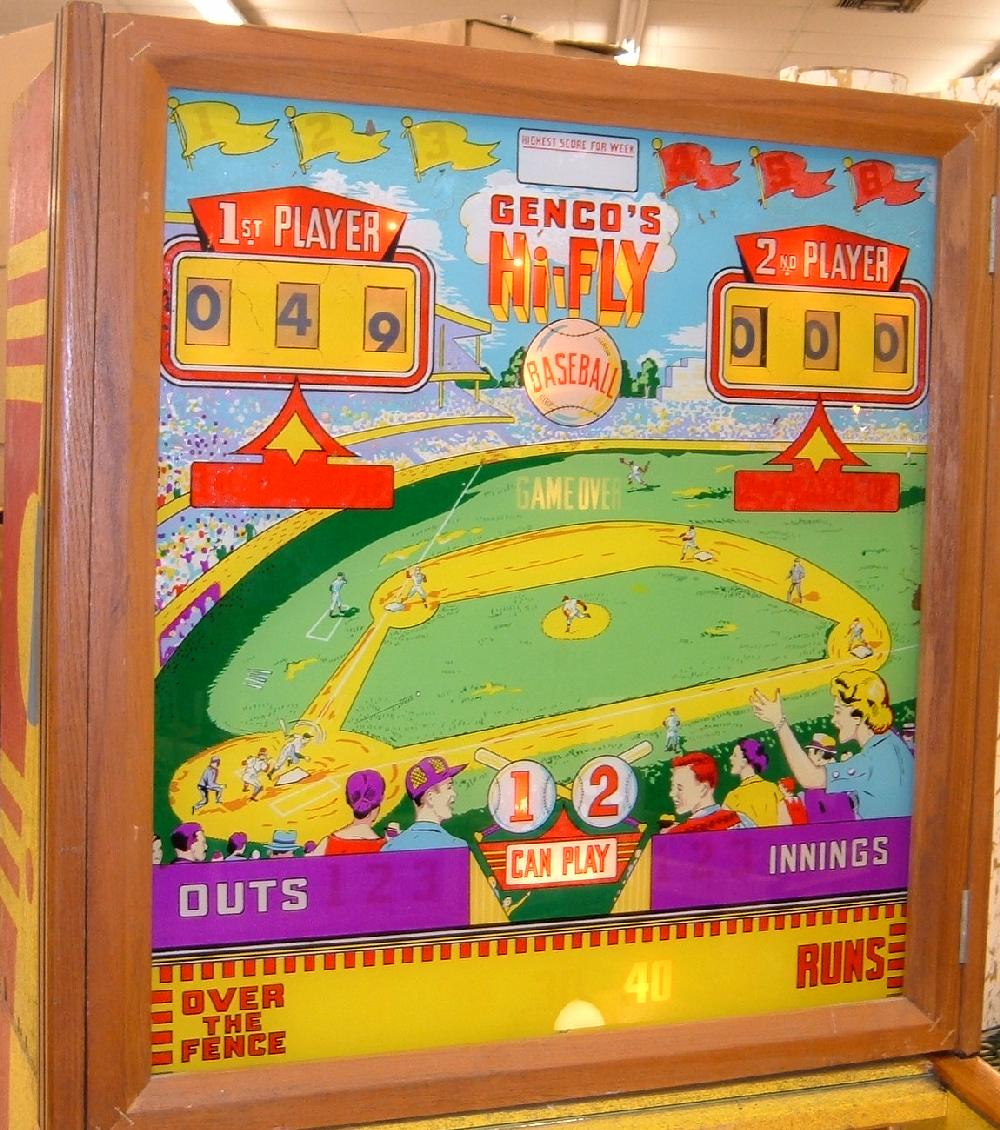
This is a later Genco HiFly that does not have the hanging tags for run values.
Instead the run values are stenciled on the walls of the run pockets.
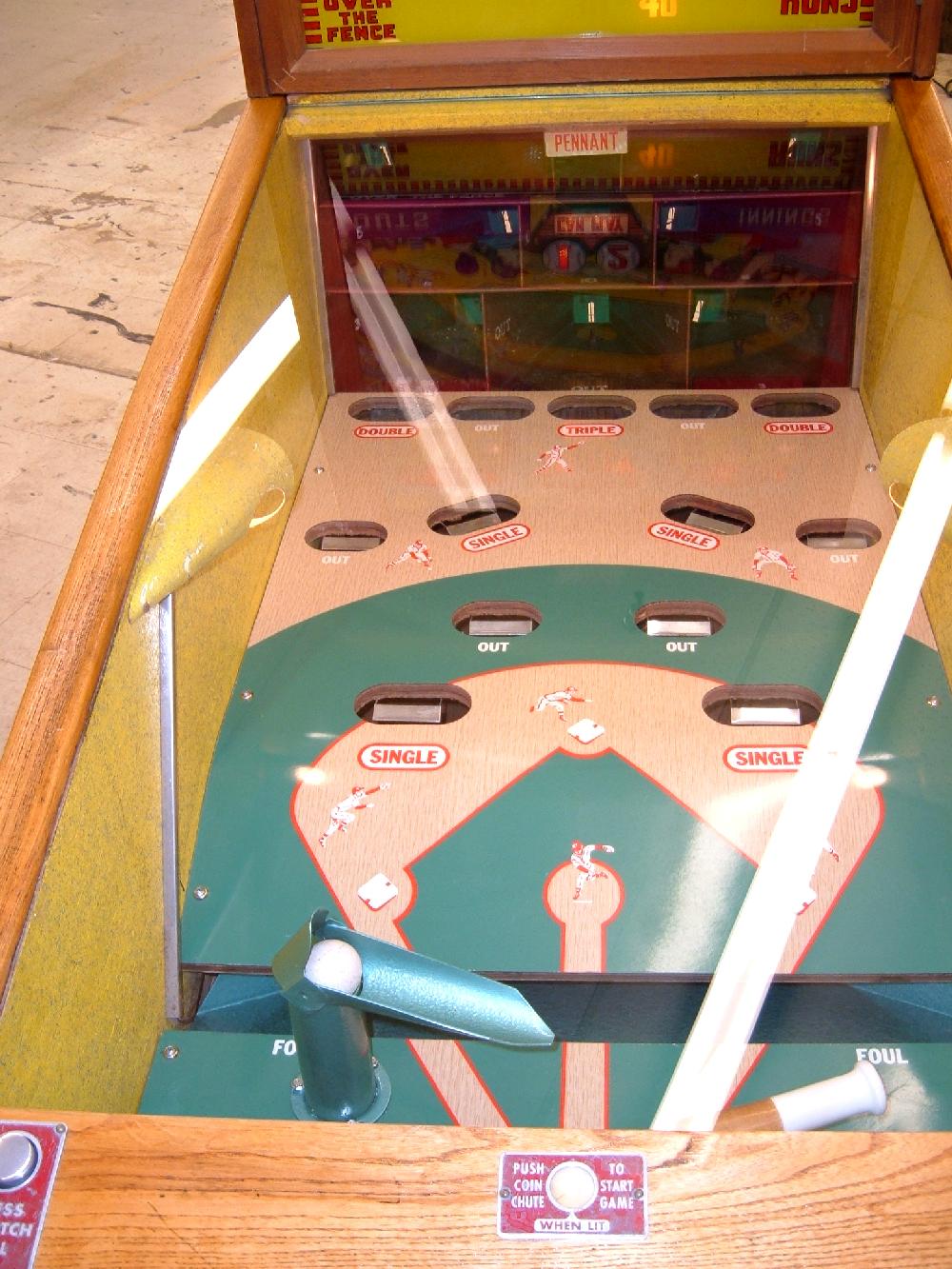
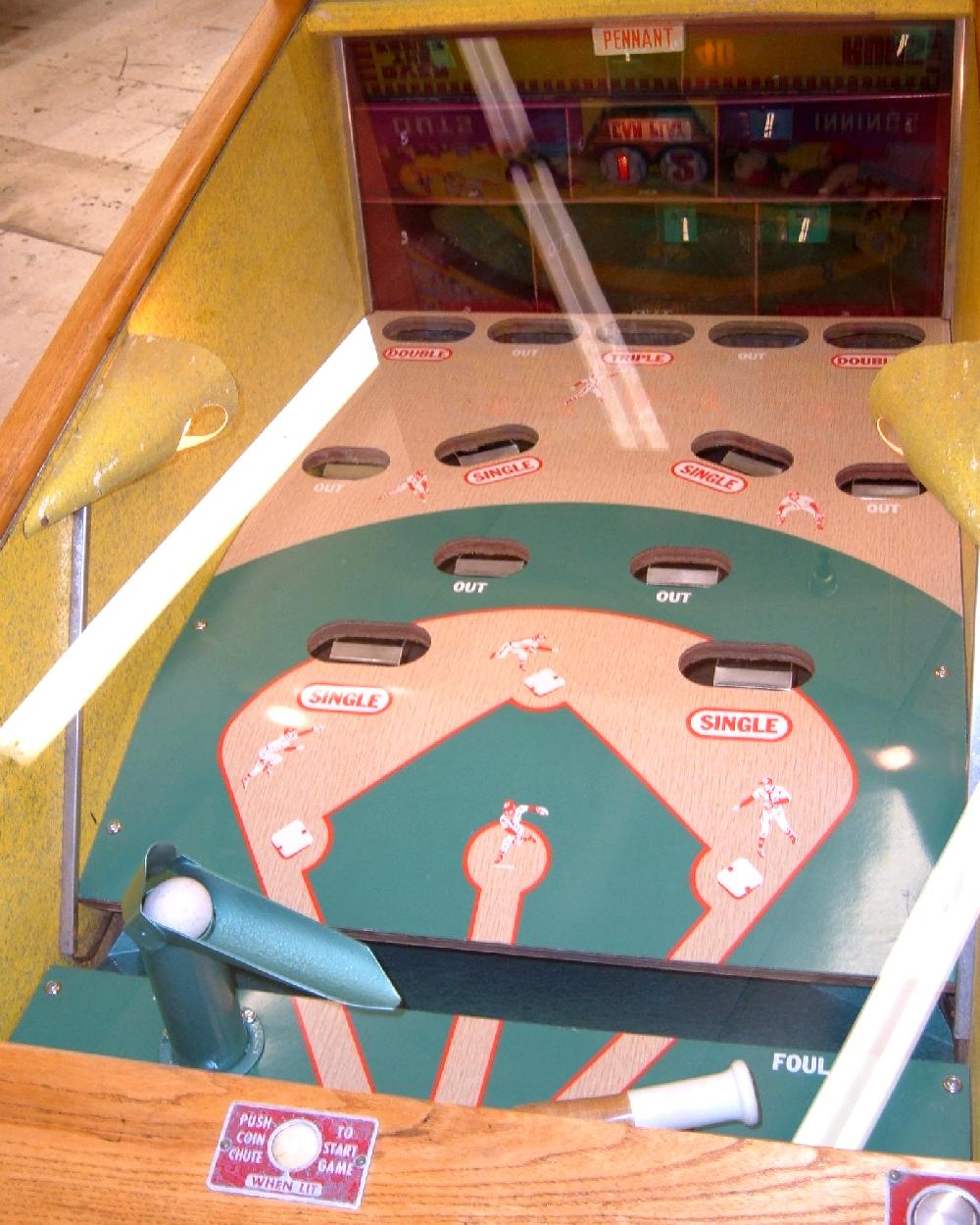
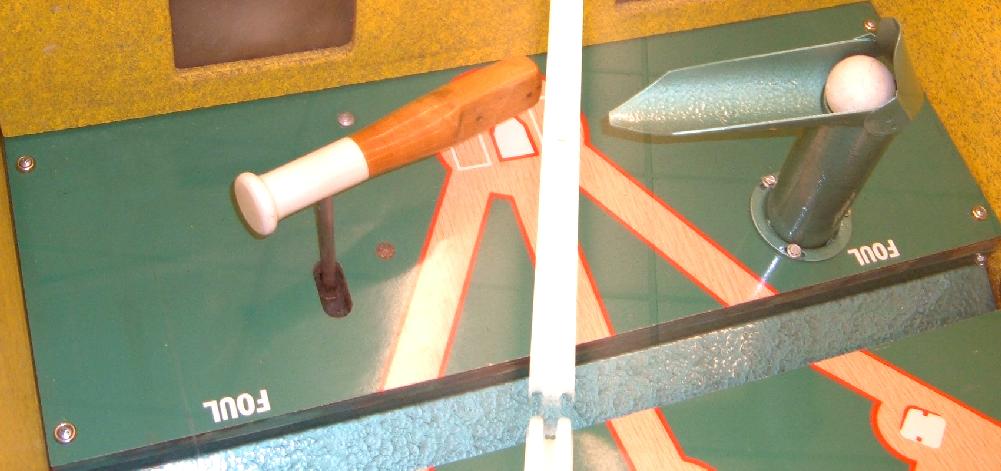
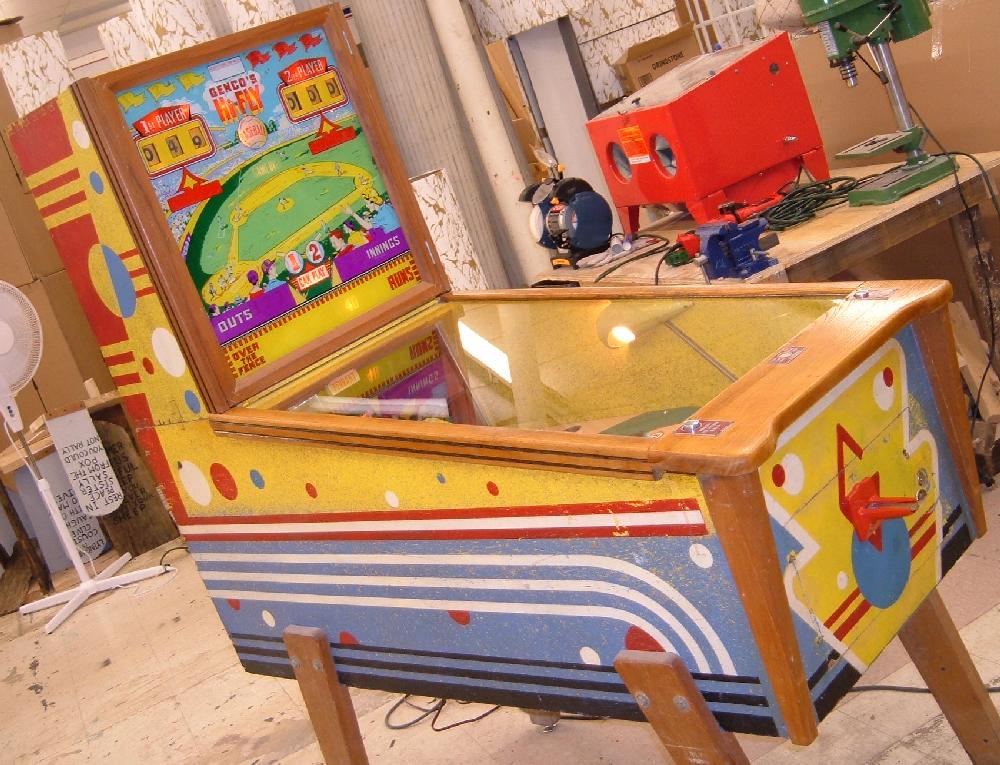
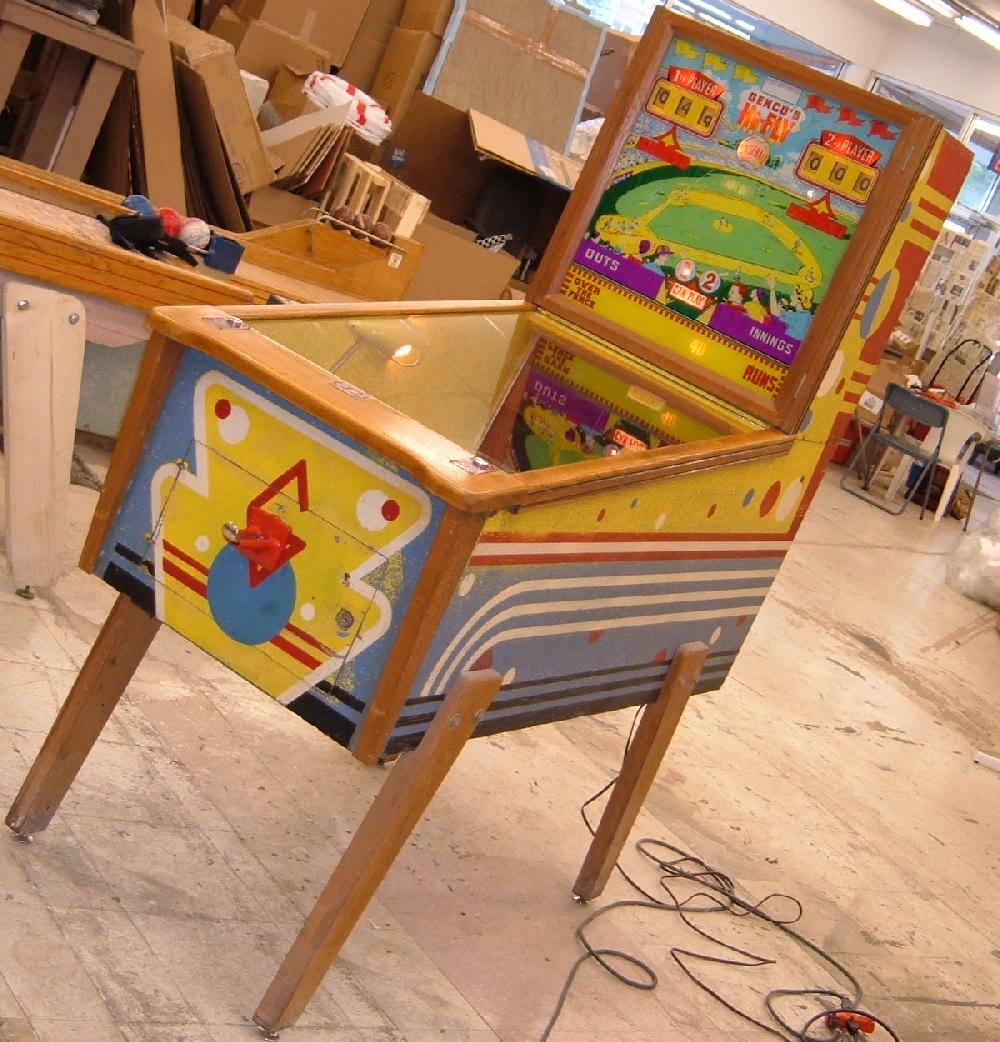
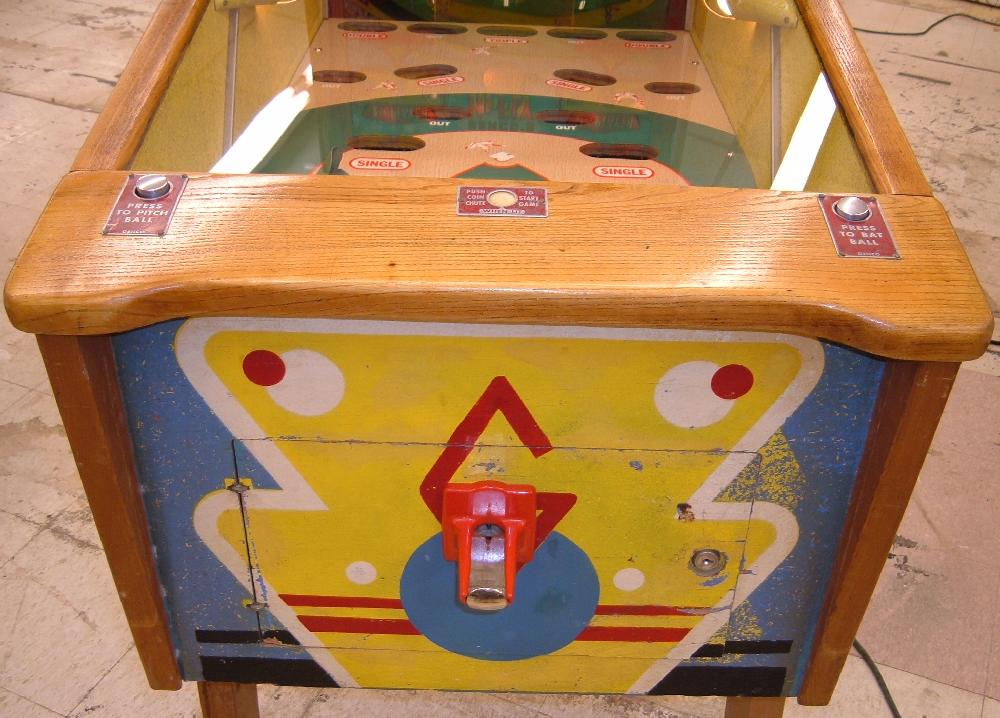
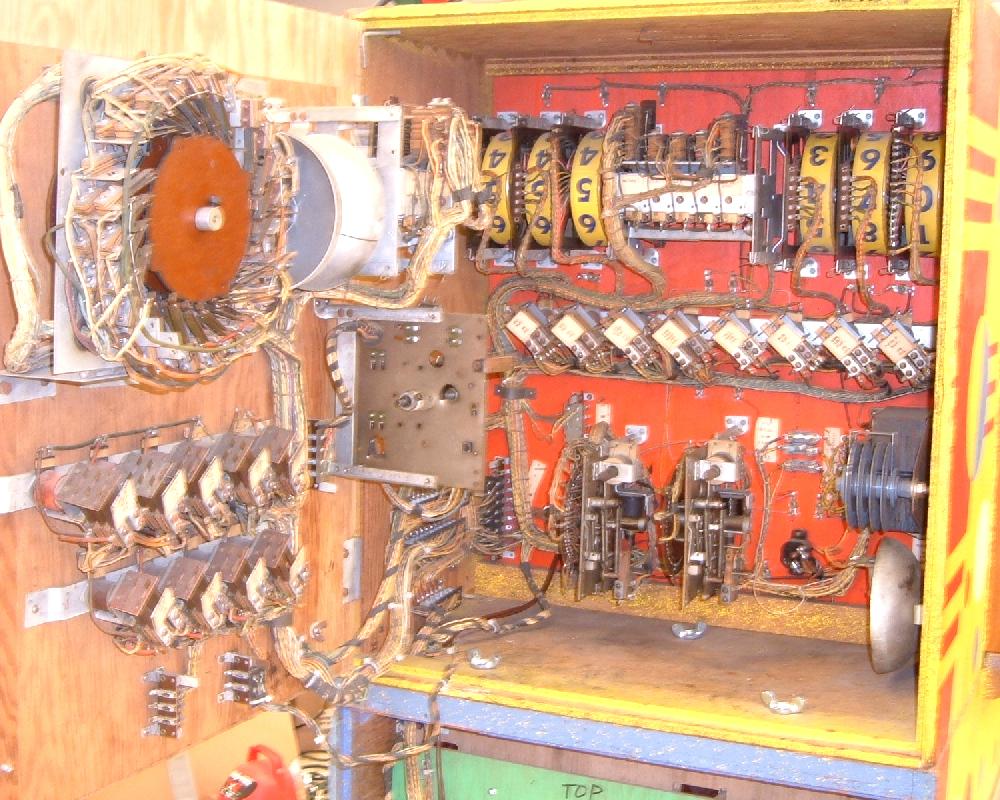
Here the position of the four 1458 (18 volt) bulbs is shown:
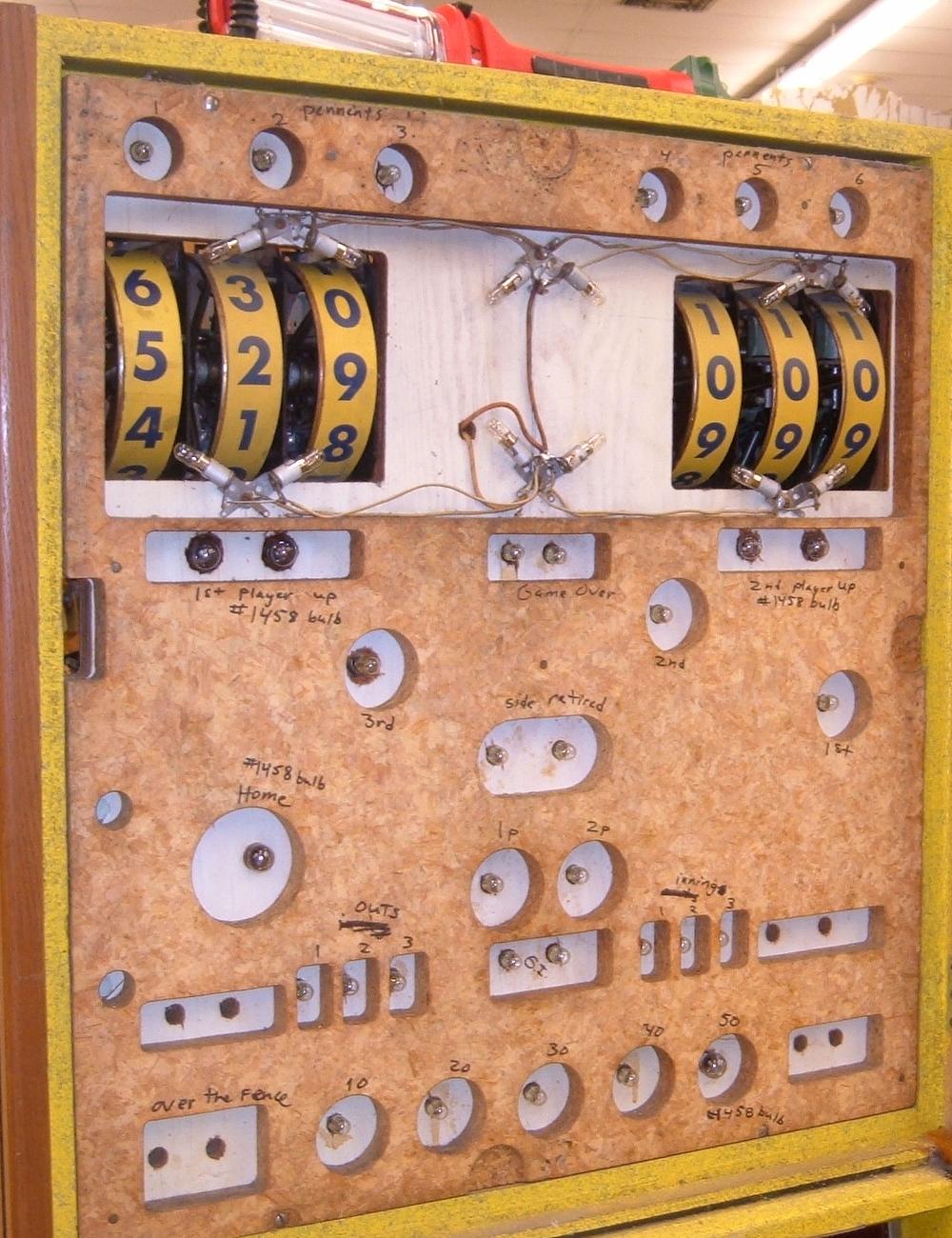
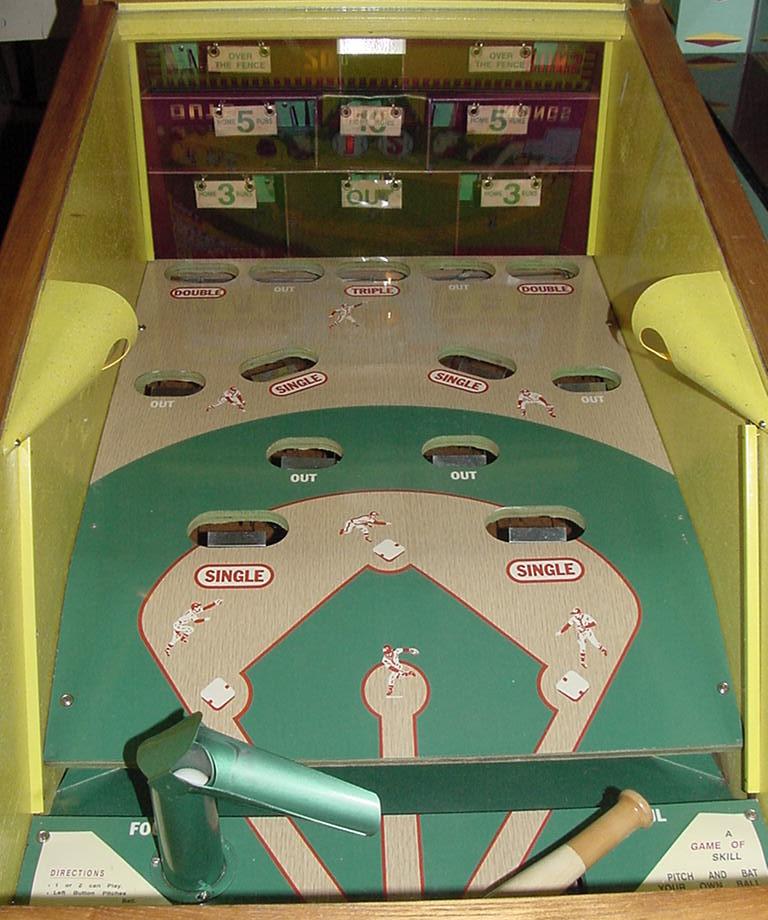
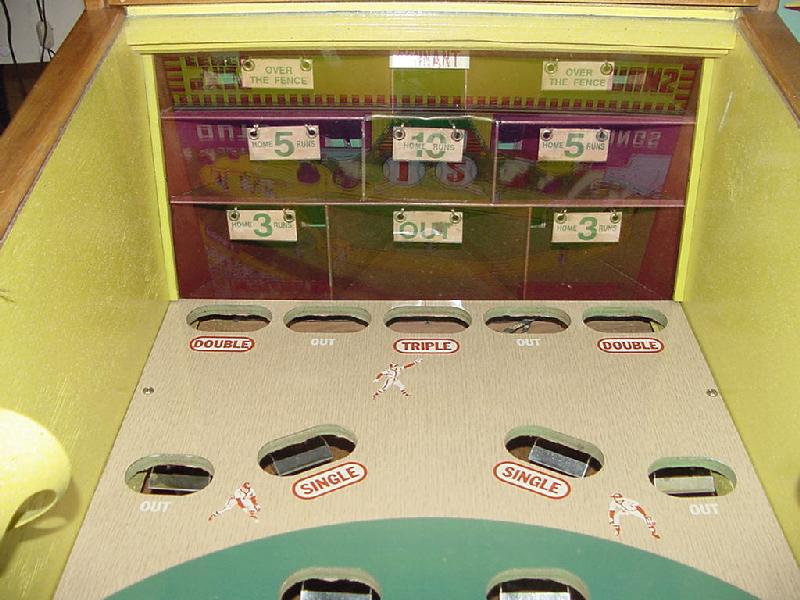
|
* Email the collector cfh@provide.net * Go to the CoinOp Baseball History index * Go to the Pinball Repair/History index |